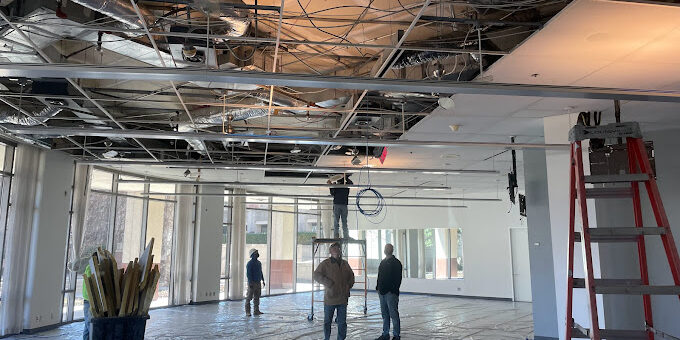Older homes in Wylie, TX offer character, charm, and a deep sense of history. However, with age often comes the need for electrical updates to ensure safety and functionality. Whether you’re remodeling a classic home or simply upgrading outdated systems, understanding the most common electrical installation mistakes in older properties is vital. Poor installations not only increase the risk of fire and electrical shock but can also cause your systems to fail under modern demand. That’s why homeowners need to be aware—and proactive—when it comes to electrical work.
With decades of experience serving Wylie and the surrounding communities, JME Electric Group is here to guide you through avoiding the pitfalls many face when upgrading electrical systems in older houses.
Key Takeaway:
Understanding and avoiding common electrical installation errors can protect your home, your family, and your investment. Proper planning and professional service are essential when working with aging electrical systems.
Outdated Wiring and Improper Connections
Relying on Unsafe Knob-and-Tube Wiring
Knob-and-tube wiring was standard in homes built before the 1950s, but it’s now considered unsafe and obsolete. This type of wiring lacks a grounding conductor, cannot handle modern loads, and is prone to damage from insulation or renovations. Replacing knob-and-tube systems with modern wiring is critical, yet many homeowners overlook this during remodels.
Splicing Without Junction Boxes
A frequent mistake involves splicing wires without proper enclosures. Exposed splices hidden behind walls or ceilings create serious fire hazards. Electrical connections should always be housed in code-compliant junction boxes for safety and serviceability.
Using Incorrect Wire Gauges
Older circuits weren’t designed with today’s high-power appliances in mind. Installing new outlets or fixtures with the wrong wire gauge can overheat circuits and trigger electrical failures. Choosing the right wire for the job is essential and must be matched to the load it will carry.
Improper Grounding and Bonding
Lack of Grounding in Old Systems
Many homes built before the 1960s lack proper grounding, leaving them vulnerable to shock hazards. Grounding ensures excess electricity flows safely into the earth instead of through people or electronics. Upgrades must prioritize grounding the entire electrical system.
Mixing Neutral and Ground Conductors
While it may seem minor, connecting neutral and ground wires improperly is a dangerous and common installation mistake. These should only be bonded in the main service panel—not subpanels. Failing to follow this rule can result in circulating current on grounding conductors.
Ground Rods Installed Incorrectly
Some DIY upgrades attempt to add ground rods to older homes without properly bonding them to the main panel or ensuring sufficient soil contact. This can create the illusion of a safe system while still leaving the home exposed to surges and faults.
Overloaded Circuits and Outdated Panels
Adding Too Many Devices to One Circuit
Modern families use far more electricity than older homes were designed to support. From home offices to smart appliances, today’s electrical needs often exceed a circuit’s capabilities. Overloading circuits without upgrading wiring or adding breakers can cause tripping and overheating.
Ignoring the Panel’s Limitations
Old electrical panels, especially fuse boxes or early breaker designs, may not be rated to handle additional circuits or increased amperage. Installing a new fixture without evaluating the panel can cause capacity issues or violate code.
Improper Breaker Installation
A common mistake includes placing oversized breakers on existing wiring in an attempt to stop nuisance tripping. This practice may seem like a fix but actually increases fire risk by allowing wires to carry more current than they’re rated for.
Code Violations During Renovations
Bypassing Permits and Inspections
Homeowners sometimes skip the permitting process to save time or money. Unfortunately, this often leads to installations that don’t meet current electrical code standards. Working with a licensed electrical contractor ensures your upgrades are both legal and safe.
Installing Non-Code-Compliant Devices
From outdated outlets to substandard fixtures, using the wrong equipment in an older home can introduce safety risks. Electrical devices must be UL-listed and appropriate for the application, especially in areas with high humidity or outdoor exposure.
Misplacing Outlets and Fixtures
In older homes with unique layouts, DIY installers may place outlets or fixtures too close to sinks or tubs. Violating required spacing or GFCI protection rules can lead to electrocution risks and code violations. It’s essential to follow modern placement requirements.
Safety Hazards and Long-Term Risks
Ignoring AFCI and GFCI Requirements
Many older homes lack the modern protection of Arc Fault Circuit Interrupters (AFCIs) and Ground Fault Circuit Interrupters (GFCIs). Failing to incorporate these devices during upgrades leaves your home vulnerable to arc faults and ground faults, which can cause fires and shocks.
Poor Labeling of Electrical Panels
An unlabeled or poorly labeled breaker box creates confusion during emergencies or maintenance. It also makes troubleshooting more difficult and dangerous. Every upgrade should include clear, updated labeling of all circuits.
DIY Repairs by Unlicensed Individuals
Perhaps the most dangerous mistake is attempting electrical upgrades without professional help. Unlicensed or inexperienced work may void insurance policies, introduce fire hazards, or cause costly future repairs. Trusting licensed electricians guarantees the work is done right.
Answering Common Questions
What should I do if my home still uses a fuse box?
You should consider upgrading to a modern breaker panel. Fuse boxes are outdated and not designed to handle today’s electrical loads. An electrical panel upgrade improves safety and reliability.
Is it okay to install new outlets in an older home without upgrading the wiring?
Not necessarily. The existing wiring must be evaluated to ensure it can support new devices. Older wiring may need to be replaced to prevent overloads or compatibility issues.
How can I know if my home has grounding problems?
Signs include frequent shocks when touching appliances, two-prong outlets, or testing failures. A licensed electrician can inspect and recommend grounding upgrades to protect your home.
The Influence of Local Building Codes on Installation
Wylie, TX follows the National Electrical Code (NEC), but local jurisdictions may have additional requirements. Homeowners must work with experienced professionals who understand regional variations in code and compliance. At JME Electric Group, our team is familiar with Wylie’s permitting process and safety regulations, ensuring every project is handled with care.
How Aging Homes Challenge Modern Electrical Needs
As technology evolves, the demand on your home’s electrical system increases. Smart appliances, HVAC upgrades, and home entertainment setups put added pressure on circuits that were never designed to handle such loads. If your older home hasn’t had a recent electrical inspection, now is the time to act.








